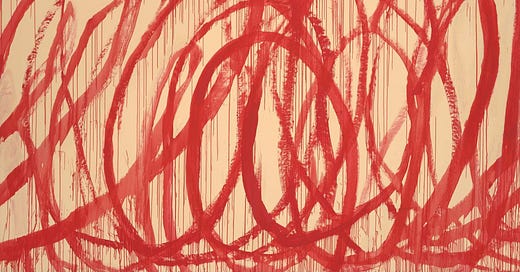Cy Twombly, an American artist renowned for his enigmatic and emotive style, is considered one of the most influential figures in the world of modern art. His work is characterized by its expressive, abstract forms, which incorporate elements of drawing, painting, and writing. Twombly's unique aesthetic blends spontaneity with meticulous composition, creating a visual language that challenges traditional artistic conventions.
Early Life and Influences
Born in 1928 in Lexington, Virginia, Cy Twombly showed an interest in art from an early age. He studied at the School of the Museum of Fine Arts in Boston and later at the Art Students League in New York, where he was exposed to the works of Abstract Expressionist artists such as Jackson Pollock and Willem de Kooning. During his time in New York, Twombly also encountered artists like Robert Rauschenberg, who would later become a close friend and collaborator.
Artistic Evolution
Twombly's early works were heavily influenced by Abstract Expressionism, with a focus on gesture and texture. However, as his career progressed, he began to move away from this style, developing his own unique approach to art. His signature style emerged in the late 1950s, characterized by scribbles, graffiti-like marks, and delicate lines on large canvases. His work often incorporated text, drawing inspiration from poetry and mythology.
Themes and Motifs
Throughout his career, Twombly explored themes of history, mythology, and the human experience. His work often referenced classical texts, including those of Greek and Roman literature, as well as the works of poets such as Rainer Maria Rilke and Stéphane Mallarmé. His pieces evoke a sense of timelessness, bridging the gap between the past and present.
Twombly's use of text and language in his art added depth and complexity to his work. His paintings and drawings often include words or phrases, blending visual and verbal elements to create a layered narrative.
Legacy and Impact
Cy Twombly's impact on the art world cannot be overstated. His unique style and approach to abstraction influenced a generation of artists and continues to inspire contemporary practitioners. His work has been exhibited in major museums and galleries worldwide, including the Museum of Modern Art in New York and the Tate Modern in London.
Twombly's ability to convey emotion and thought through his art remains a hallmark of his legacy. His work challenges viewers to engage with the visual and verbal, exploring the relationship between form, color, and language. Cy Twombly passed away in 2011, but his contributions to the art world continue to resonate, making him a key figure in the history of modern art.





